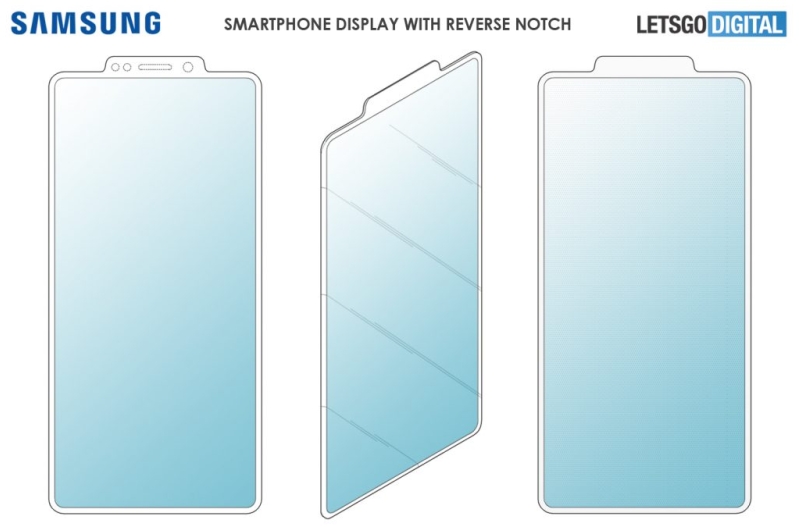
Just last year, Samsung filed a patent with the KIPO (Korean Intellectual Property Office) that will surely raise eyebrows today. The patent in question? A design of a display that seems to showcase the much maligned notch, although this particular notch is in reverse. Yes, it no longer drops down and disrupts your view of the screen, but will instead go upwards - something that will also break the harmonious, close-to-no-bezel' look that many smartphone models today (especially the flagships) aspire to.
Lets GoDigital have come up with a mockup render of said patent. The whole idea of a reverse notch display is to maximize the side of the screen. Should it come to pass, one will surely question the wisdom of this reverse notch display since the finished product would not be too different from a regular smartphone with an upper bezel that provides adequate space for sensors, speakers, and camera(s) cutouts.
Make what you will of the patent description:
...the present design is a display module with a display panel attached to the back of the cover window used in a smartphone. The cover window includes a protruding portion at the top center and agreed to the protruding portion. By placing the cameras, speakers etc in there, the screen size can be maximized while creating a rectangle screen.
With motorized pop-up cameras starting to make their mark in the smartphone world as the next step in hardware evolution, there certainly isn't a need for a reverse notch display. Of course, some might argue against having more moving parts which would translate to potentially more hardware issues (not to mention the amount of lint and dust that could end up interfering with the motor's movement after a while), but perhaps this patent is more of a backwards step in terms of design as opposed to delivering a viable solution.
Some have called it the "notchpocalypse", as the notch in smartphone displays has made its mark in more ways in terms of design. It did take some getting used to when the notch first appeared on smartphones, with the argument against it citing design continuity disruption and an unsymmetrical look. In fact, the notch has 'evolved' to be a dot in the screen itself, 'breaking free' from the bezel such as found in the Samsung Galaxy S10 family of devices.
A reverse notch design might roll out in the future and become the norm, and when that happens it will certainly attract its fair share of detractors and perhaps some fans. What do you think of the idea of a reverse notch in a smartphone? Will it detract from the close-to-full screen experience that current generation flagship smartphones embrace?
Companies file patents all the time as part of a process to protect their intellectual property just in case one of their ideas make it big down the road. One must also remember that not all patents end up being mass produced or mass marketed, so the reverse notch display might never even see the light of day.







